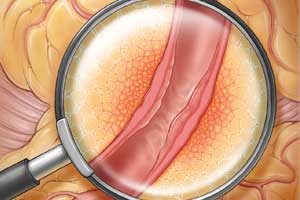- Home
- Editorial
- News
- Practice Guidelines
- Anesthesiology Guidelines
- Cancer Guidelines
- Cardiac Sciences Guidelines
- Critical Care Guidelines
- Dentistry Guidelines
- Dermatology Guidelines
- Diabetes and Endo Guidelines
- Diagnostics Guidelines
- ENT Guidelines
- Featured Practice Guidelines
- Gastroenterology Guidelines
- Geriatrics Guidelines
- Medicine Guidelines
- Nephrology Guidelines
- Neurosciences Guidelines
- Obs and Gynae Guidelines
- Ophthalmology Guidelines
- Orthopaedics Guidelines
- Paediatrics Guidelines
- Psychiatry Guidelines
- Pulmonology Guidelines
- Radiology Guidelines
- Surgery Guidelines
- Urology Guidelines
Novel imaging biomarker That predicts cardiac mortality: ESC 2018

The researchers at Cleveland Clinic have developed a novel imaging biomarker That can predict cardiac mortality. It measures inflammation of fatty tissue surrounding the coronary arteries for achieving this goal. The new study has been published in the journal Lancet and subsequently presented at the European Society of Cardiology Congress 2018 in Munich, Germany.
Coronary artery inflammation inhibits fatty tissue formation surrounding the blood vessels, known as perivascular fat. Researchers developed the perivascular fat attenuation index (FAI) as an imaging biomarker to quantify inflammation-induced changes in perivascular fat. FAI captures coronary inflammation by mapping the changes in perivascular fat on coronary computed tomography angiography (CTA), enabling early detection of coronary inflammation.
"This is an exciting new technology which has the potential for providing a simple, non-invasive answer to detect patients at risk for future fatal heart attacks," co-first author Dr. Milind Desai, a Cleveland Clinic cardiologist, said in a press release. "More importantly, it highlights the incredible value of cross-continent collaboration to validate the findings in different populations."
Also Read: Could this protein protect people against coronary artery disease?
In the system, FAI captures coronary inflammation by mapping changes in perivascular fat on coronary computed tomography angiography or CTA.
For the Cardiovascular Risk Prediction using Computed Tomography, or CRISP-CT, study, researchers analyzed data from patients undergoing coronary CT angiography, 1,872 patients in Germany from 2005 to 2009 and 2,040 patients at Cleveland Clinic from 2008 to 2016. The median patient age 62 in the German study and 53 years in the U.S. one.
"This new technology may prove transformative for primary and secondary prevention," said study leader Dr. Charalambos Antoniades, of University of Oxford's Division of Cardiovascular Medicine. "For the first time, we have a set of biomarkers, derived from a routine test that is already used in everyday clinical practice, that measures what we call the 'residual cardiovascular risk,' currently missed by all risk scores and non-invasive tests."
He said it is vital to know who is at increased risk for a heart attack because of early intervention.
"I expect these biomarkers to become an essential part of standard CT coronary angiography reporting in the coming years," Antoniades said.
For further reference follow the link: https://doi.org/10.1016/S0140-6736(18)31114-0

Disclaimer: This site is primarily intended for healthcare professionals. Any content/information on this website does not replace the advice of medical and/or health professionals and should not be construed as medical/diagnostic advice/endorsement or prescription. Use of this site is subject to our terms of use, privacy policy, advertisement policy. © 2020 Minerva Medical Treatment Pvt Ltd